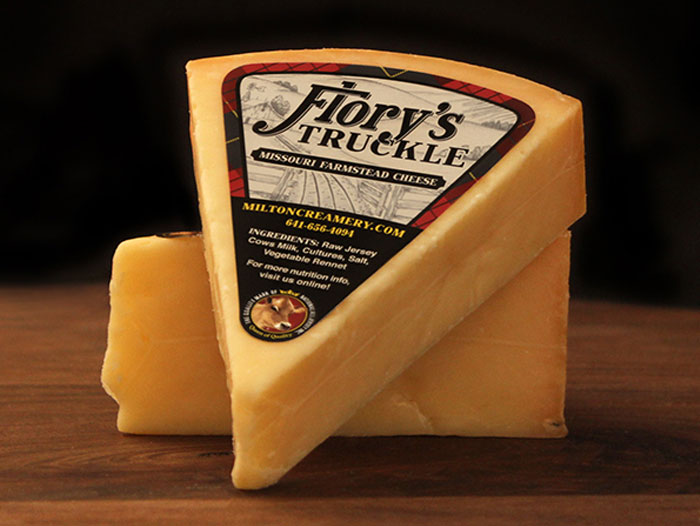This Razor-Sharp Cheddar Is the Sour Warhead of the Cheese World
May 9, 2019 | 2 min to read

You may be able to tell from my soft and squishy physique that I was raised on Cheddar (thanks, Mom). Its fat, tangerine-hued, “extra-sharp” bricks form the foundation of my cheese temple. Growing up, the omnipresent hunk in my fridge always had teeth marks where my brother and I had knobbled chunks straight off the block. It wasn’t until I was dosed with my first true Cheddar that the doors of perception were cleansed, and this sacred cheese appeared to me as it truly is: very dank, and nothing like the bendy bricks of my youth. As your humble cheese genius, allow me to guide you in the medicinal ceremony of Cheddar snarfage, and introduce you to this week’s brain-bending bliss bundle: Flory’s Truckle.
Cheddar originated in England in the 12th century. It is traditionally made with cow’s milk, aged for one to two years, and produced in large, clothbound, barrel-shaped wheels (also known as “truckles”). As the wheels age, enzymes break down fats and proteins in the milk, transforming the flavor of the cheese from mild and buttery to spicy, earthy, and (as it reaches stages of true self-actualization) the tart “sharpness” we all covet. The inside of these wheels is not orange (!), but a soft, pale yellow! The intense orange you find in modern, mass-produced Cheddars (and many other cheeses) actually comes from the addition of dyes—in most cases, annatto.
To read the rest of the story, please go to: Vice
